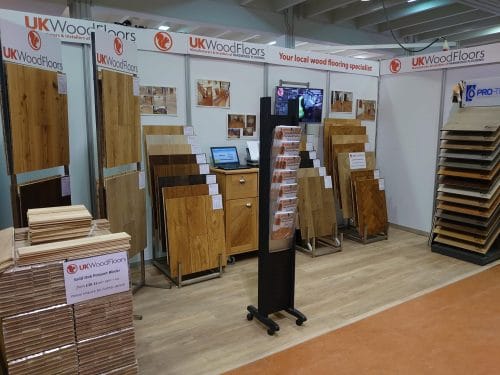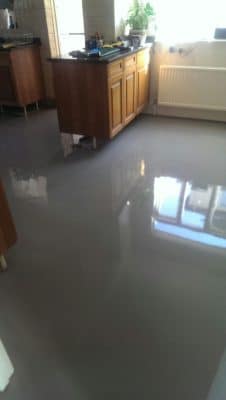There are lots of things to think about before buying a real wood floor. Just like any big purchase, jumping in before you have taken all the considerations into account can lead to mistakes. For example, if the floor is sealed properly it shouldn’t mark, but you should still put felt stoppers under furniture legs and avoid high heeled shoes to protect your investment.
If you haven’t got the chance to do the research yourself, our experts will be happy to discuss every aspect of your decision with you and suggest more suitable products if a real wood floor is not necessarily the best fit. Here are a few tips to help you make the right choice…
1. Achieving the right look
Before ordering a real wood floor, you should request a floor sample so you can see how the floor will fit with the rest of the room. You should also bear in mind that all timbers darken with age, particularly those which are lighter to start with.
If you have a modern home then avoid heavy grained wood with lots of knots, which will only date the space. Instead, keep a similar tone throughout with a light oak or similar. To achieve the best effect, you should also lay the boards in the direction of the light entering the room, as this will help to accentuate the beauty of the wood.
2. How much flooring do you need?
The beauty of real wood floors is just how little wastage there needs to be. Your fitters should be able to keep wastage down to as little as 2 percent. Just measure your room and round up to the nearest square metre and we can provide the planks (all at 2000mm lengths) or parquet in whatever specification and species you need.
If you’re laying the flooring yourself, it makes sense to order an extra couple of square metres to account for the additional wastage there’s likely to be.
3. The underlay and damp proof membrane
You’re laying the flooring over a sand and cement or concrete floor then you will need a damp proof membrane and an excellent underlay to protect the floor. In terms of the underlay, thicker foams or felt are best. We offer a range of quality underlays and can provide any advice you need. You should also check whether the flooring manufacturer recommends a particular underlay as it could affect the guarantee.
4. What finish should you go for?
There are three things to consider when deciding on the right finish for you. That includes:
- Personal taste – how you want the floor to look;
- Traffic – how much footfall the floor will be subject to;
- Maintenance – how easy it is to clean the floor and repair any damage.
Wood floors can be oiled or lacquered and both of these options will have a different impact on your floor.
- Lacquered – Using a lacquer makes it obvious that a coating has been applied as it sits on top of the wood rather than sinking in like an oil. Lacquered floors are hard-wearing, less prone to scratches and scrapes and can be easily wiped clean. However, lacquer can become worn in high traffic areas which can lead to scratches on the surface. The only way to repair the damage would be to sand the floor and reapply the lacquer.
- Oil – Oil sinks into the wood grain to achieve a more natural look than lacquer. It is also very easy to apply and scratches can be repaired simply by adding more oil. The downside is that the floor will stain and be damaged more easily and have to be re-oiled from time to time, which does add to the maintenance.
At UK Wood Floors, we stock a number of floor finishes as well as our beautiful real wood floors. If you‘d like to know more about any of our flooring options, please get in touch with our team.



